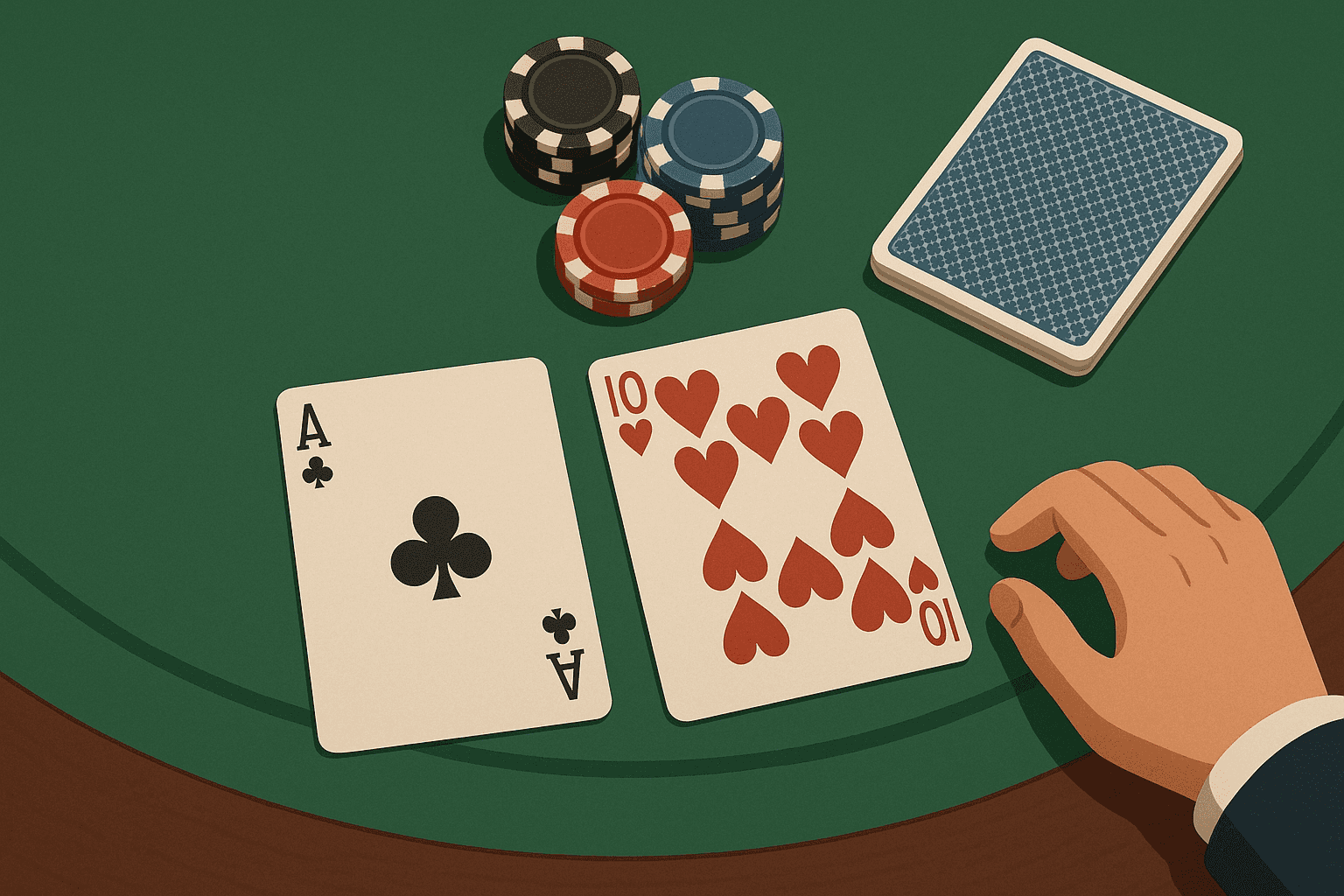
Counting Cards in Blackjack - Skill, Strategy and Legality Explained
Few casino strategies have captured the public imagination quite like card counting. Immortalized in films, books and popular culture, it’s often portrayed as a secret method to “beat the house.” In reality, counting cards is neither magic nor cheating—it’s a sophisticated application of probability and focus. While the technique remains legal, its use in professional gaming environments raises questions about ethics, skill and fair play. If you’re new to the game itself, you can start by reading our Blackjack rules guide for a full overview before exploring how counting cards actually works.
Created By Adam Davis Fernsby
What Is Card Counting?
Card counting is a strategy used by some Blackjack players to estimate whether the next hand is likely to give an advantage to the player or the dealer. It works by keeping track of the ratio between high and low cards remaining in the deck. The idea is simple in theory: high cards (10s, face cards and Aces) favor the player because they increase the chance of hitting Blackjack or strong hands, while low cards (2–6) favor the dealer as they reduce the likelihood of dealer busts. By mentally assigning values to cards as they’re dealt, players can estimate when the deck is “hot” (favorable to them) or “cold” (favorable to the dealer). This doesn’t predict specific cards but reflects shifts in probability, which is central to mathematical game theory.
The Mathematics Behind Card Counting
At its core, card counting relies on probability distribution. As cards are revealed, the remaining deck composition changes. Tracking this balance lets skilled players adjust their strategy to maximize expected value over time. The most common approach, known as the Hi-Lo system, assigns +1 to low cards (2–6), 0 to neutral cards (7–9) and –1 to high cards (10, J, Q, K, A). As cards are dealt, the player keeps a “running count.” A positive count indicates that more high cards remain in the deck, statistically improving the player’s odds. When the count is negative, the deck favors the house. While simple on paper, maintaining this calculation under pressure requires exceptional focus, memory and self-control. Professional counters also convert the running count into a “true count” by adjusting for the number of decks in play, further refining their probability model.
At its core, card counting relies on probability distribution. As cards are revealed, the remaining deck composition changes. Tracking this balance lets skilled players adjust their strategy to maximize expected value over time. The most common approach, known as the Hi-Lo system, assigns +1 to low cards (2–6), 0 to neutral cards (7–9) and –1 to high cards (10, J, Q, K, A). As cards are dealt, the player keeps a “running count.” A positive count indicates that more high cards remain in the deck, statistically improving the player’s odds. When the count is negative, the deck favors the house. While simple on paper, maintaining this calculation under pressure requires exceptional focus, memory and self-control. Professional counters also convert the running count into a “true count” by adjusting for the number of decks in play, further refining their probability model.
| Card Value | Example Cards | Assigned Count | Impact on Game | Reasoning |
|---|---|---|---|---|
| Low cards (2–6) | 2, 3, 4, 5, 6 | +1 | Favors dealer | Removing low cards increases chances of player advantage since dealer is more likely to bust |
| Neutral cards (7–9) | 7, 8, 9 | 0 | Neutral | These cards have minimal influence on the probability balance |
| High cards (10–A) | 10, J, Q, K, A | –1 | Favors player | When many high cards remain, players are more likely to hit Blackjack or force dealer busts |
The balance between high and low cards shifts constantly. A positive count suggests the player should increase their bets, while a negative count signals caution. This simple but powerful system forms the mathematical backbone of every professional counting strategy.
Is Counting Cards Legal?
Contrary to popular belief, counting cards is not illegal. It doesn’t involve tampering, cheating devices or collusion. It’s purely mental arithmetic based on visible information. However, casinos have the right to protect their business interests. They may ask suspected counters to stop playing Blackjack, restrict betting limits or ban individuals from the premises entirely. To counter this strategy, casinos often use multiple decks, frequent shuffling or continuous shuffle machines, and behavioral tracking systems. So while card counting remains lawful, its practical application is increasingly limited in professional casino settings.
Ethical and Professional Perspectives
From an ethical standpoint, card counting occupies a gray area. On one hand, it’s a legitimate mental skill—an extension of probability and concentration. On the other, casinos design games to operate within specific mathematical margins, and counting shifts those odds slightly in the player’s favor. Professionally, many view counting as part of Blackjack’s intellectual challenge rather than deception. It’s comparable to mastering chess openings or analyzing poker hands—strategies based on logic and observation. Yet the social contract of casino gaming is unique: players are expected to compete under fixed conditions, and casinos reserve the right to maintain those conditions. Thus, while counters may see themselves as using skill, the house views it as breaking the “spirit” of the game.
The Reality of Counting Cards Today
In modern casinos, traditional card counting is far less effective. Multi-deck shoes, rapid shuffling and digital dealing systems drastically reduce the player’s ability to maintain accurate counts. Team-based counting, once made famous by the MIT Blackjack Team, is also largely obsolete. Surveillance, data analysis and automatic deck management have closed many of the loopholes that once existed. Still, the legacy of card counting endures as a symbol of applied mathematics and discipline. It demonstrates how probability can be used to challenge randomness, even in environments designed to favor the house.
Can Anyone Still Learn It?
Technically, yes. The principles of card counting can be learned by anyone with patience, memory and practice. But success in today’s casino landscape is extremely rare. To perform effectively, a counter must memorize card values, maintain focus over long sessions, act naturally without revealing behavioral patterns, adjust strategies across varying rules and accept that most casinos actively monitor for this method. For most players, the intellectual exercise is more rewarding than the financial outcome. Many enthusiasts practice counting as a mental challenge—a real-world experiment in probability, risk and human behavior.
Conclusion
Counting cards in Blackjack is a fascinating blend of mathematics, psychology and self-discipline. It remains one of the clearest examples of strategy applied to chance, bridging the gap between skill and luck. Though its effectiveness in modern casinos has diminished, the concept endures as a lesson in focus and probability. In the end, it’s less about outsmarting the dealer and more about understanding how small shifts in numbers and behavior can shape the outcome of a game.
